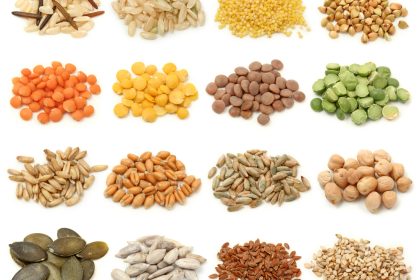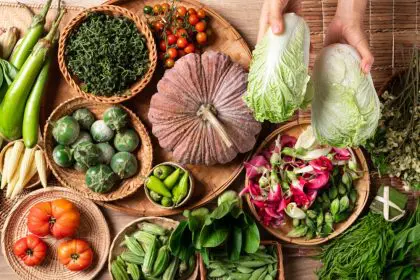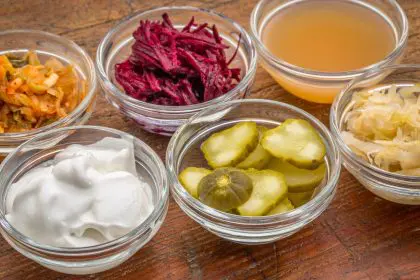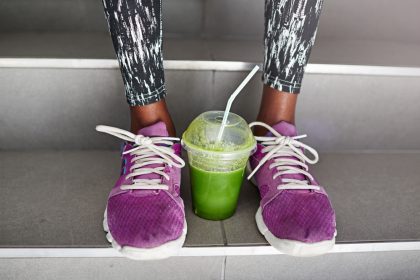Remember when veggie burgers were sad, dry hockey pucks that tasted vaguely of cardboard? Those days are gone. The new generation of plant-based burgers sizzle on the grill, “bleed” when you bite into them, and have converted even the most dedicated carnivores. They’ve taken over fast food menus, supermarket shelves, and probably your last backyard barbecue.
But here’s the million-dollar question that’s probably crossed your mind while chowing down on these meatless marvels — are these actually healthier than the beef burgers they’re replacing? The answer might surprise you.
The science behind fake meat that bleeds
Let’s get one thing straight — these aren’t your hippie aunt’s homemade black bean patties. The Impossible Burger and Beyond Burger are technological achievements designed in labs by food scientists with a singular mission to create plants that taste like meat.
Unlike traditional veggie burgers that proudly showcase their vegetable chunks, these newcomers are trying their hardest to trick your taste buds. They’ve been engineered to replicate everything from the sizzle and aroma to the mouthfeel and “bleeding” quality of animal meat.
The masterminds behind these meaty imposters have gone to extraordinary lengths to crack the code of what makes meat taste like meat. In the case of the Impossible Burger, they identified a molecule called heme as the secret ingredient that gives meat its distinctive flavor profile and created a plant-based version using soy leghemoglobin.
What’s actually inside these burgers
If you’re imagining these patties are made from mashed-up vegetables, think again. The ingredient lists read more like science experiments than something from your garden.
The Impossible Burger builds its foundation on soy protein concentrate, which delivers that meaty texture. Then comes coconut and sunflower oils for juiciness and flavor. The magic happens with soy leghemoglobin, their lab-created heme molecule that gives the burger its meaty taste and that Instagram-worthy pink center that “bleeds” when you bite in. Binding it all together is methylcellulose, a plant-based thickener, along with yeast extract for that umami flavor bomb.
Meanwhile, the Beyond Burger takes a slightly different approach. It uses pea protein as its base, making it soy-free for those with allergies or concerns about soy consumption. Rice and lentil proteins join the mix for nutritional variety, while avocado oil provides healthy fats. Like its competitor, it also uses methylcellulose as a binder, but creates its meaty magic through a proprietary mix of plant-based ingredients that achieve that beef-like experience.
Both companies keep updating their recipes, striving to get ever closer to the real thing while improving nutrition profiles. What you ate last year might not be the same as what you’ll get today.
Nutrition face-off: plants vs beef
Here’s where things get really interesting. Despite being plant-based, these burgers aren’t necessarily nutritional superstars compared to their beefy counterparts. In fact, the numbers are surprisingly similar.
A 4-ounce Impossible Burger patty delivers 230 calories, 19 grams of protein, and 13 grams of fat with 6 of those being saturated fat. The Beyond Burger weighs in at 230 calories, 21 grams of protein, and 14 grams of fat, though only 2 grams are saturated.
Compare that to a 4-ounce 85% lean beef patty, which contains 192 calories, 20 grams of protein, and 12 grams of fat with 4.5 grams being saturated. The beef actually comes in slightly lower in calories and total fat than both plant alternatives.
Where the plant-based options pull ahead is fiber content, offering several grams in each patty while beef contains zero. However, they fall behind dramatically when it comes to sodium. The Impossible Burger packs 370 milligrams of sodium and the Beyond Burger contains 310 milligrams, while a plain beef patty has just 55 milligrams.
This sodium difference shouldn’t be shocking. Creating meaty flavor without meat requires some serious salt, and these are processed foods after all. But it’s definitely something to consider if you’re watching your sodium intake.
The bigger health picture of plant power
While the calorie and macronutrient profiles may not scream “health food,” there’s more to the story than just numbers. Research consistently shows that well-planned plant-based diets offer impressive health benefits.
Vegetarian diets have been linked to lower LDL cholesterol levels, reduced risk of heart disease, and decreased incidence of certain cancers. By shifting away from animal products, you’re also avoiding potential concerns associated with conventional meat production, like antibiotics and certain hormones.
Then there’s the environmental angle. Plant-based foods generally require significantly less land, water, and energy to produce than animal products. They also generate fewer greenhouse gas emissions. So while your individual burger choice might seem small, collectively these decisions can have meaningful environmental impact.
Processing matters but context does too
Let’s address the elephant in the room. Yes, these burgers are processed foods. They’re made in factories, not farms or gardens. But not all processing is created equal.
While Impossible and Beyond burgers undergo substantial processing, they don’t fall into the ultra-processed category that nutrition experts worry about most. They don’t contain the added sugars, artificial colors, or preservatives that define truly problematic ultra-processed foods.
Plus, they’re delivering actual nutrition in the form of protein, fiber, vitamins, and minerals. That puts them in a different category than empty-calorie processed snacks that offer virtually no nutritional value.
That said, they’re still a far cry from whole foods like beans, lentils, and vegetables in their natural state. Most nutrition experts would rank them somewhere in the middle of the health spectrum rather than at either extreme.
Making smarter burger choices
Here’s the takeaway that might disappoint hardcore fans and critics alike — these plant-based meat alternatives are neither nutritional villains nor heroes. They’re somewhere in the middle, offering a convenient, environmentally friendlier option for those times when you just really want a burger experience.
If health is your primary concern, your best bet is making homemade veggie burgers from whole food ingredients like black beans, mushrooms, quinoa, or lentils. This way, you control exactly what goes in, can minimize sodium, and maximize vegetable content.
But if you’re at a restaurant, barbecue, or just craving that classic burger experience without the animal impact, the Impossible and Beyond options certainly have their place. They’re particularly valuable as transition foods for people moving toward more plant-based eating or as occasional treats for long-term vegetarians who miss the taste and texture of meat.
The smartest approach might be seeing these as exactly what they are — processed convenience foods that can be part of a balanced diet when enjoyed in moderation alongside plenty of whole, minimally processed plant foods.
After all, no single food makes or breaks a healthy diet. It’s the overall pattern that counts. So go ahead and enjoy that plant-based burger if you’re craving one, but maybe pair it with a side salad instead of fries, and save it as an occasional pleasure rather than an everyday staple.















